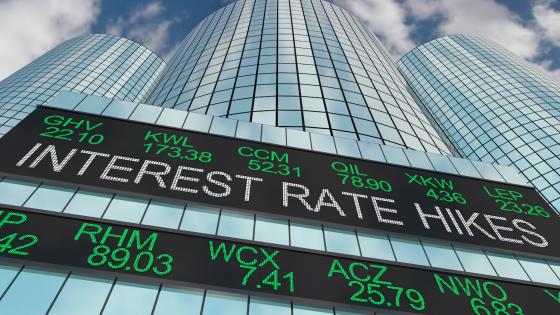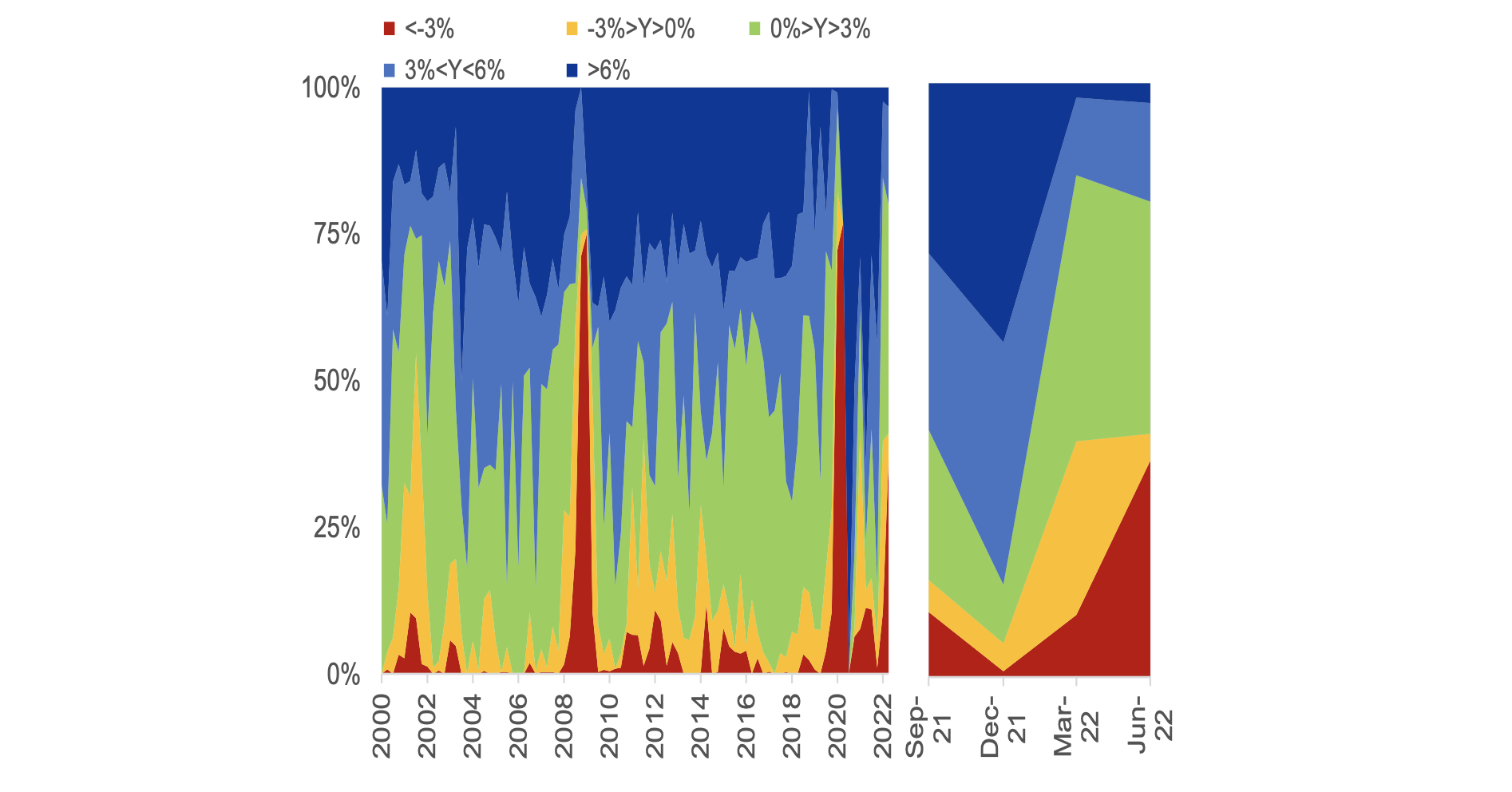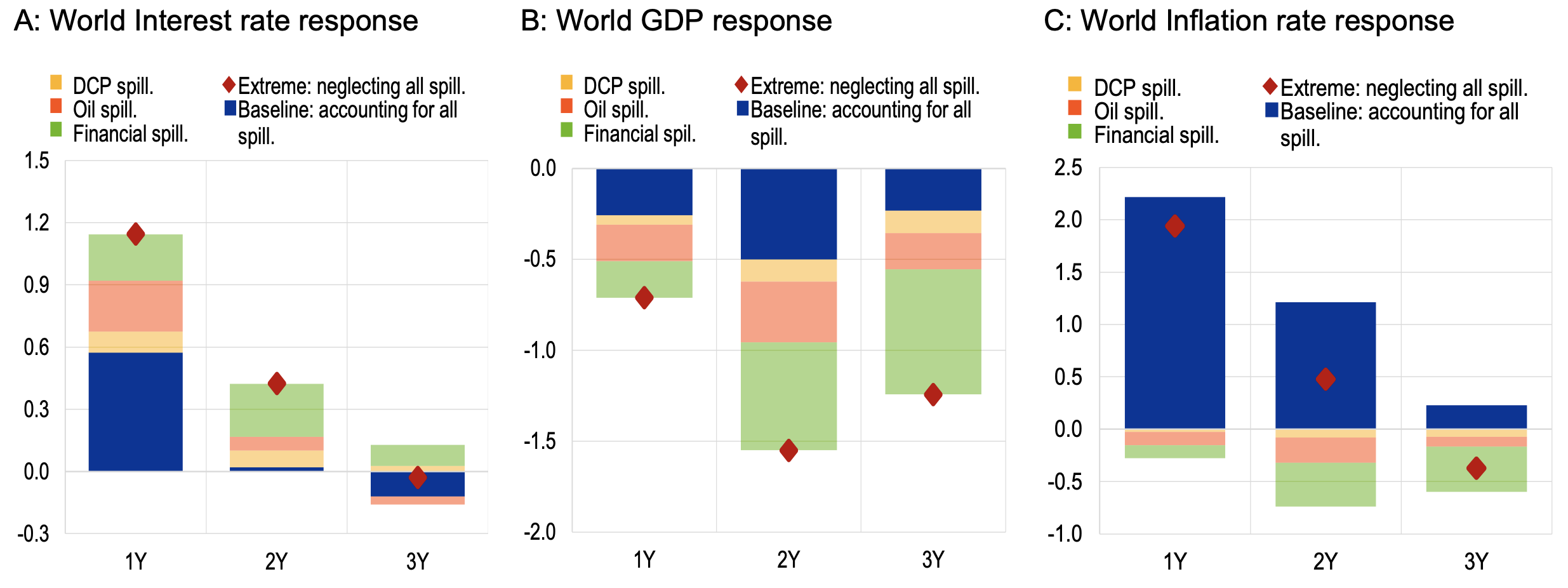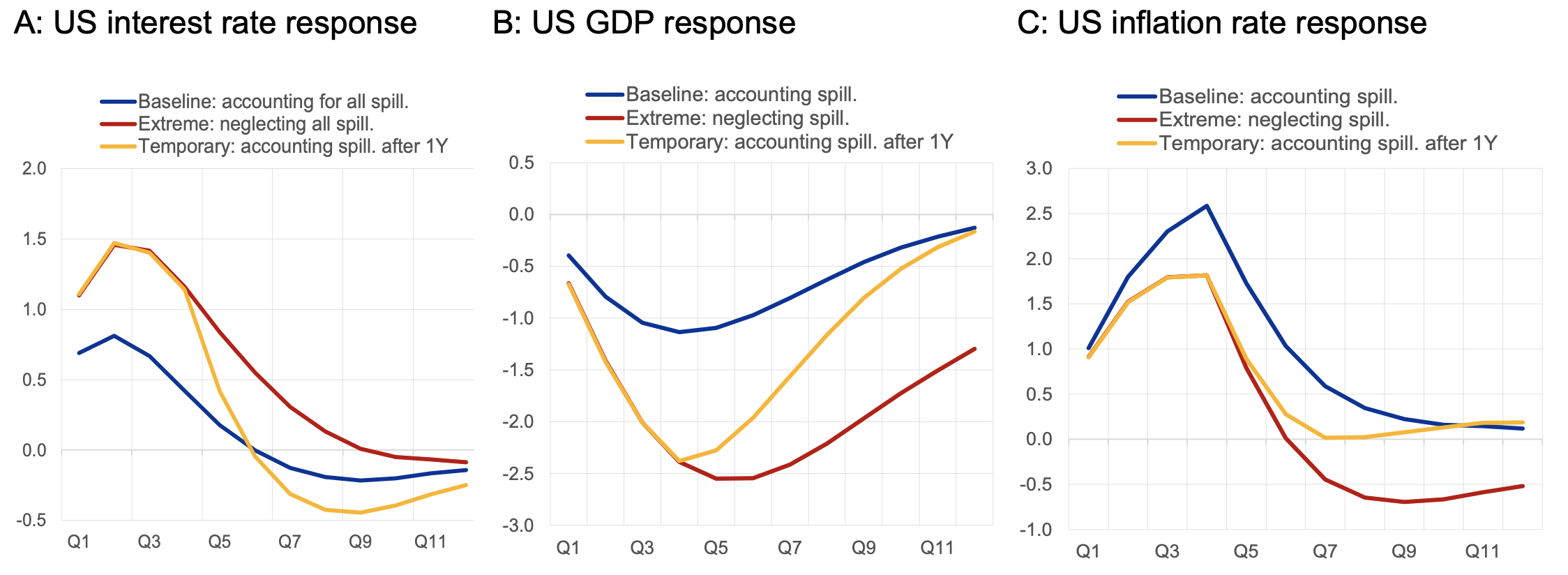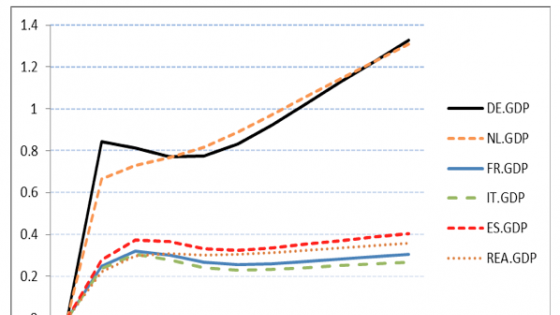A large number of economies are currently experiencing high and persistent inflationary pressures due to a sequence of supply shocks including rising commodity prices and supply disruptions, although a strong increase in demand is also an important factor in some countries (Shapiro 2022, Freund 2022). In response, many central banks around the world have increased interest rates. The highly synchronised nature of these interest rate hikes raises concerns over the likelihood of a global recession (Guénette et al. 2022). Obstfield (2022) recently stressed the importance for central banks of adequately incorporating the large spillovers coming from other central banks’ tightening. Not doing so could potentially lead central banks to tighten too much, and thus generate a global recession. The role of monetary policy spillovers has also been widely studied in the literature, which has documented the magnitudes of the spillovers via both real and financial channels (e.g. Rey 2015, Iacoviello and Navarro 2019, Kalemli-Ozcan 2020, Ca’ Zorzi et al. 2020).
Historically, synchronised inflation surges (i.e. a high share of countries experiencing high and rising inflation) and rate hike synchronisation have regularly led to global recessions (Figure 1).
Since 1970 there have been four periods in which more than 75% of countries in the analysed sample had inflation surges: 1973, 1979, 1991, 2007, with the episodes of 1973 and 1979 specifically linked to a high energy prices, a characteristic that can only partially resemble today’s situations (Ha et al. 2022). Each of the episodes matches with a period in which synchronisation of monetary policy is high (defined as more than 75% of countries raising interest rates). In a large share of countries, inflation surges and synchronised interest rates increases have been followed by global recessions (early 1970s, 1980s, 1990s and 2007) or by global slowdowns (2000 and 2012). The magnitude of rate hikes is a factor in determining the extent of the slowdown.
Currently, more than 80% of countries in our sample exhibit inflation surges, and the synchronisation tightening index is above 70%. At the same time, a large share of economies are slowing, and in some cases heading into recession. Starting from the first quarter of 2022, there has been a progressive erosion of the economic outlook, characterised by a worsening of economic conditions (Gourinchas 2022). Specifically, in the second quarter of 2022, countries accounting for almost 40% of global activity recorded negative quarter-on-quarter real GDP growth (Figure 2, red and yellow area),
a level which in the past has often coincided with episodes of global recession or slowdown. This share jumps to almost 75% once we include countries which are also experiencing only rather moderate growth (Figure 2, green area). Furthermore, recession probability models are predicting an increase in the likelihood of falling into recession in the next quarters, although the results could also depend on the model specification (Kiley 2022).
Figure 1 Inflation surges, rate hikes synchronisation and global recessions (percentage of countries)
Figure 2 Real GDP growth shares (global weighted share of countries, annualised quarterly growth)
Sources: Haver, IMF, BIS data, ECB staff calculations. Last observation: 2022 Q2.
Notes: See “endnotes” 1 for the LHS chart and 2 for the RHS chart.
Neglecting the global spillover channels: A model-based analysis
The importance of accounting for the global dimension of monetary policy has been studied through simulation exercises with ECB Global, a multi-country model (Georgiadis et al. 2021). The analysis examines the GDP effects of an increase of inflation, followed by a synchronised reaction of monetary policy by many central banks. It highlights the importance of properly accounting for all the main channels through which spillovers propagate.
In the baseline scenario, there is a persistent but temporary increase in inflation caused by a global inflationary shock coming from the supply side affecting all the countries and regions (a cost-push shock). In this scenario, some of the central banks react to the global inflationary pressure and raise their interest rates contemporaneously (specifically the US, euro area, UK, and Asian economies, excluding Japan and China), while taking account all the spillovers and spillbacks from the synchronised rise in interest rates. The initial shock pushes inflation across countries above the steady state by around 2 percentage points in the first year (Figure 3C, blue bars). This causes a mutual reaction in monetary policy across central banks to tame the inflationary pressures, bringing inflation rates back to their steady state by the third year. The policy rate increase is mainly concentrated in the first period of the scenario analysis (Figure 3A): interest rates rise by 0.6 percentage points in the first year globally, before going back to the steady state during the second year, and below the steady state in the third year. At the same time, due to higher interest rates and price pressures, world GDP is negatively affected, decreasing up to 0.5 percentage points in the second year (Figure 3B).
Figure 3 Variable responses to a global cost-push shock( percentage deviations from steady states)
Sources: ECB-Global and ECB staff calculations.
In an extreme scenario, while reacting to the global inflationary pressures, each central bank is assumed to not adequately incorporate (some of) the negative spillovers coming from the other central banks’ tightening (red diamonds in Figure 3).
Specifically, this scenario assumes that both financial (equity prices and bank lending tightness) and real interlinkages (oil prices and dominant currency pricing channels)
are underestimated by central banks across the globe. This causes interest rates to rise more compared to the baseline scenario as the dampening effects of the spillovers on inflation are not accounted for. The interest rate increase doubles in the first year, with rates rising by almost 1.2 percentage points compared to the baseline scenario and remaining above steady-state levels throughout the scenario horizon, at 0.5 percentage points for the world in the second year – while in the baseline scenario they had returned to the steady state by that time. This also implies an undershooting of global inflation, which declines at a faster pace. After returning to the baseline already in the second year, it falls below the steady state in the third year. The impact on world GDP is also more negative and more persistent, which falls by around 1 percentage point more than in the baseline scenario in both the second and third year.
Finally, a ‘channel decomposition’ of three different spillover channels is undertaken. The model simulations suggest that not accounting for financial interlinkages comes at a significant cost to economic growth, accounting for more than half of the additional decline in GDP in the second and third year (Figure 3, light green bars). An underestimation of dampening effects on inflation of weaker oil prices also pushes up interest rates, causing a cost to GDP which amounts to around 0.3–0.4 percentage points (orange bars). A misjudgement of the ‘dominant currency pricing’ channel has more limited effects (red bars).
Temporary spillover underestimation
The above results are influenced by the rather strong assumption that the central banks are assumed to not adequately account for spillovers throughout the whole period. It appears more realistic, however, that central banks, even if they initially overlook adverse spillover effects, learn quickly about their extent and adjust their policies accordingly. In order to take this into account, the next scenario assumes that the central banks miss the spillover channels only in the first stage, due to the contemporaneous nature of the global interest rate hikes, but reasses domestic and foreign economic conditions after one year. The new scenario is labelled as ‘temporary spillovers underestimation’, and is compared with both the baseline and the extreme scenarios, focusing on the effects on the US economy.
Figure 4 Temporary underestimation of the global spillovers (percentage deviations from steady states)
Sources: ECB-Global and ECB staff calculations.
As we assume that central banks revise their policies based on economic conditions only after the first year, the interest rate response is equal to the extreme scenario in the first four quarters (yellow and red lines, respectively, in Figure 4). As in the extreme scenario, as global spillovers are not factored in, interest rates increase more than necessary (represented by the yellow line with respect to the blue line). Once we allow the central bank to account again for the spillovers starting from the fifth quarter, the interest rate is immediately lowered, reaching a level which is even below the baseline scenario as the central bank corrects its initial misjudgement. In other words, central banks understand that they have tightened too much due to an underestimation of global spillovers in the first year and adjust monetary policy to take account of the new domestic and global economic conditions. This has two important consequences for the economy: (1) GDP returns faster to the steady-state level and exhibits a much lower decrease compared to the extreme scenario; and (2) the inflation rate remains above the steady-state level and does not fall in any undershooting territory. From an inflation-fighting perspective, temporary higher interest rates would be preferable, but come with a bigger economic sacrifice. However, accounting for spillovers minimises the GDP costs.
Conclusion
The analysis shows that it is crucial for central banks to take global spillovers into account to minimise the cost for the economy in terms of lost output. However, even if some of the important spillover channels are not initially accounted for, a rapid reassessment of global spillovers, with a consequent reassessment of monetary policy, can still avoid a large negative effect on economic growth and an undershooting of inflation. Of course, the performed simulations are to be intended as illustrative and a simplification of reality. For instance, the nature of the shock driving the inflationary pressures can be crucial in terms of the results, and other factors which are not present in the analysis – for example, fiscal policy interventions or inflation expectations – can also play an important role. Nevertheless, the analysis strongly underlines the importance incorporating the monetary policy spillovers when reacting to global inflationary pressures in an interconnected world, highlighting some of the possible challenges for central banks at the current juncture.
Authors’ note: This column should not be reported as representing the views of the ECB. The views expressed are those of the authors and do not necessarily reflect those of the ECB.
References
Ca' Zorzi, M, L Dedola, G Georgiadis, M Jarociński, L Stracca and G Strasser (2021), “Making waves–Fed spillovers are stronger and more encompassing than the ECB’s”, ECB Working Paper Series No 2407.
Iacoviello, M and G Navarro (2019), “Foreign effects of higher US interest rates”, Journal of International Money and Finance 95: 232-250.
Freund, C (2022), “Soaring demand is driving double-digit import price inflation in the United States”, Peterson Institute for International Economics Policy Brief 22-12.
Georgiadis, G, S Hildebrand, M Ricci, B Schumann and B and Van Roye (2021), “ECB-Global 2.0: A global macroeconomic model with dominant-currency pricing, tariffs and trade diversion”, ECB Working Paper Series 2530.
Gourinchas, P-O (2022), “Global economic growth slows amid gloomy and more uncertain outlook”, blog, International Monetary Fund.
Guénette, J D, M A Kose and N Sugawara (2022), “Is a Global Recession Imminent?”, available at SSRN.
Ha, J, M A Kose and F Ohnsorge (2022), “Today’s inflation and the Great Inflation of the 1970s: Similarities and differences”, VoxEU.org, 7 March.
Kalemli-Ozcan, S (2020), “US monetary policy, international risk spillovers, and policy options”, VoxEU. org, 16 January.
Kiley, M T (2022), “Financial and Macroeconomic Indicators of Recession Risk”, FEDS Notes, 21 June.
Obstfeld, M (2022), “Uncoordinated Monetary Policies Risk a Historic Global Slowdown”, PIIE Realtime Economic Issues Watch, 12 September.
Rey, H (2015), “Dilemma not trilemma: the global financial cycle and monetary policy independence”, NBER Working Paper No. 21162.
Shapiro, A H (2022), “How Much do Supply and Demand Drive Inflation?”, FRBSF Economic Letter 2022-15.
